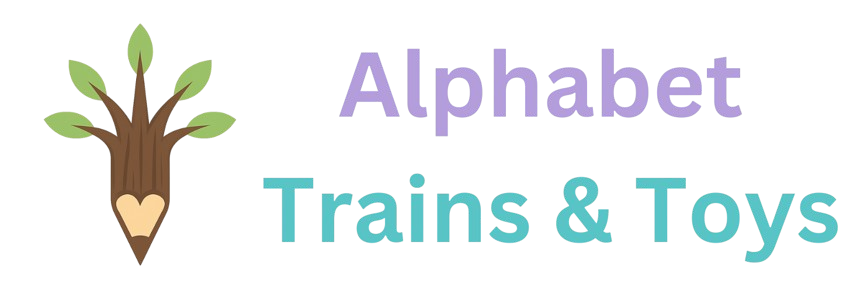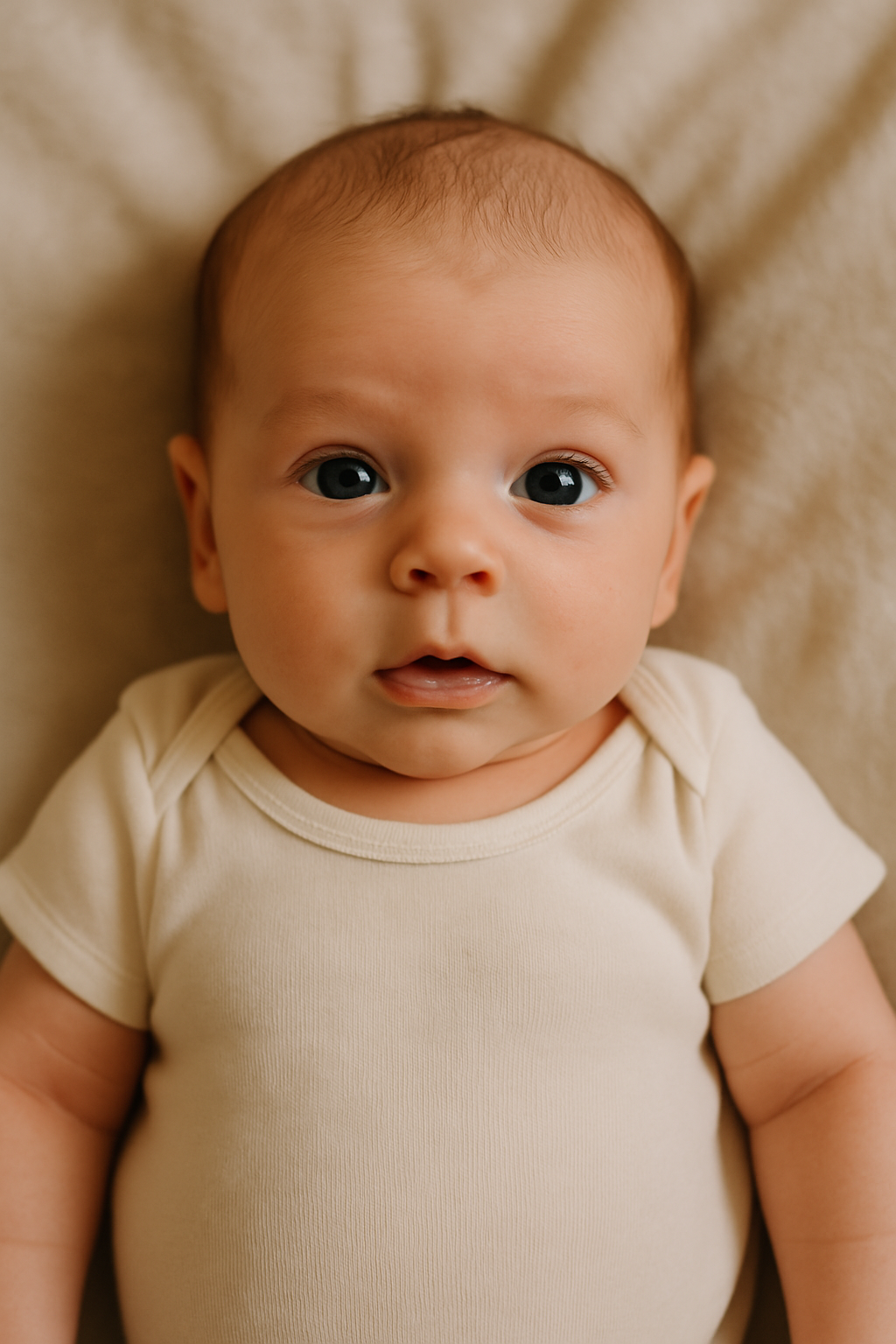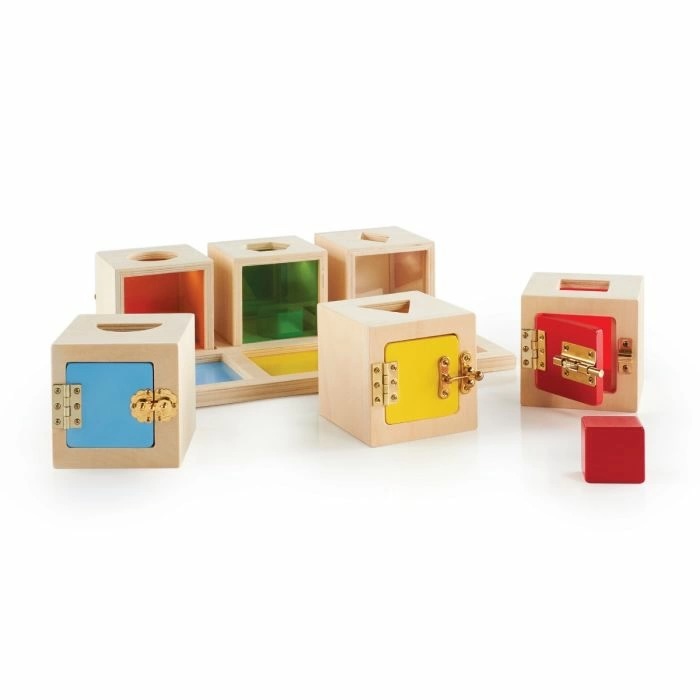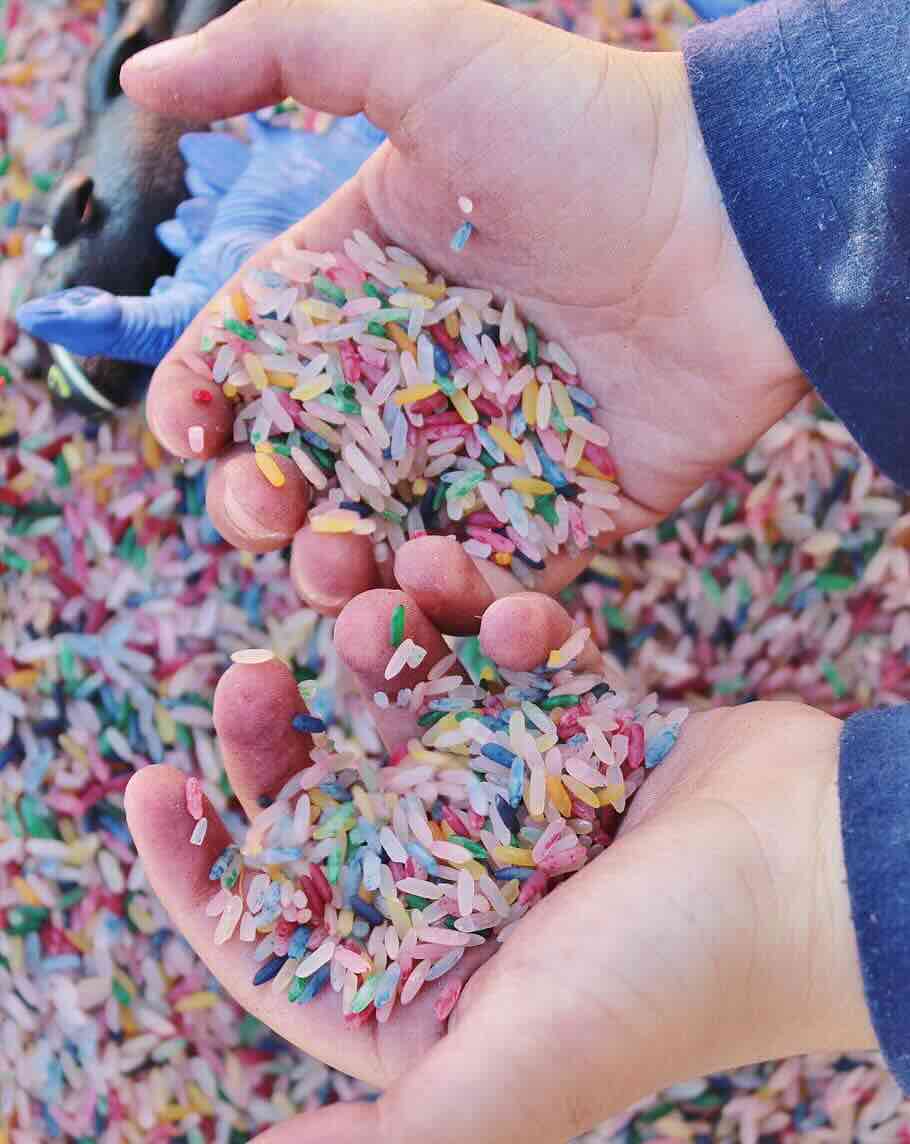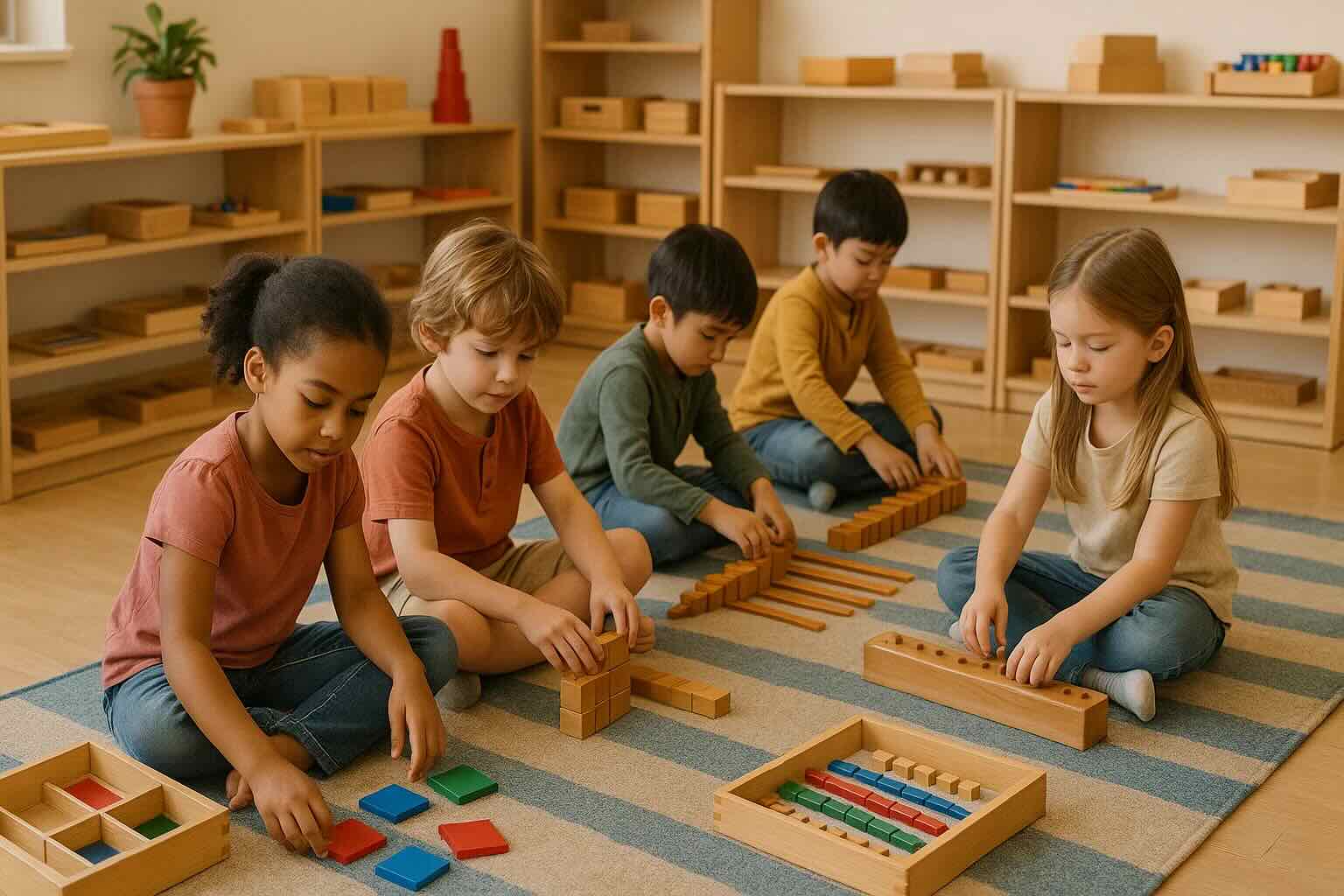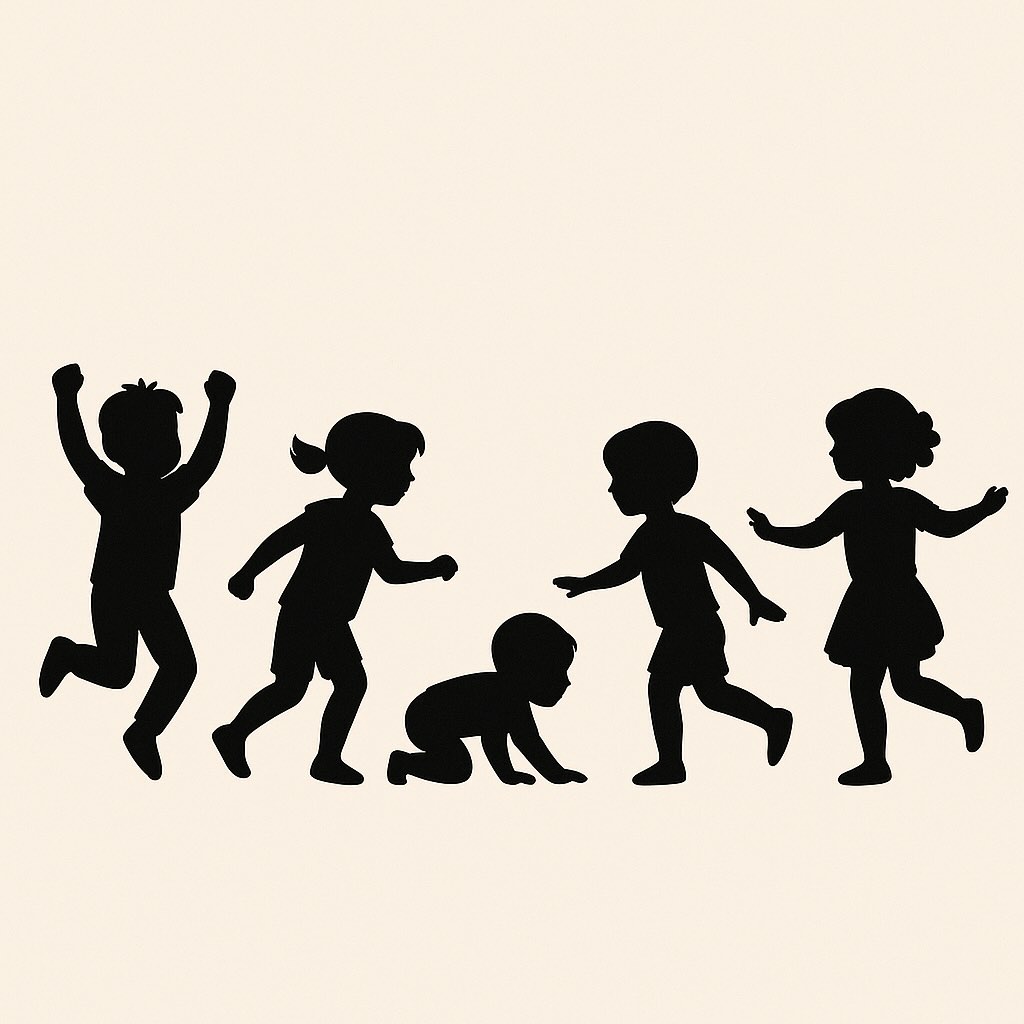Montessori Activities for 2-Month-Olds
Explore over 70 Montessori-aligned activities crafted especially for your 2-month-old baby. These ideas support visual focus, early language, sensory exploration, and bonding — all through calm, meaningful interaction.
For a full breakdown of activities suited to each developmental stage, visit our Montessori activities by age guide.
Visual Stimulation and Tracking 👁️
These activities help your baby begin to focus on shapes, patterns, and movement.
1. Hang a high-contrast mobile above the changing table.
2. Use black-and-white flashcards during tummy time.
3. Slowly move a toy left to right for baby to track with eyes.
4. Let baby watch ceiling fans or shadows move on the wall.
5. Hold up a soft book 8–12 inches from baby’s face and turn pages slowly.
6. Alternate light and dark swatches of cloth near baby’s field of view.
Tummy Time and Physical Development 🧰
Builds neck strength, core muscles, and early body control.
7. Lay baby on a soft but firm surface for tummy time daily.
8. Use a floor mirror to keep baby engaged during tummy time.
9. Place a rolled-up towel under baby's chest for gentle support.
10. Let baby lay on your chest while you recline — great face-to-face bonding and lifting.
11. Put a black-and-white toy just out of reach to encourage head movement.
12. Bicycle baby’s legs gently during diaper changes to stimulate movement.
Auditory Exploration 👂
Helps baby start recognizing sounds, rhythms, and voice direction.
13. Clap your hands softly behind baby’s head — pause to see if they turn.
14. Speak or sing gently to the left and right to build spatial awareness.
15. Read short poems or rhyming storybooks aloud.
16. Whisper baby’s name followed by kisses to associate sound with affection.
17. Tap two wooden blocks softly near baby to introduce rhythm.
18. Introduce wind chimes or rain sounds during naps or calming time.
Bonding, Language, and Emotion 💬
These ideas support emotional connection and early language exposure.
19. Talk through everything you’re doing (“Now I’m buttoning your shirt!”).
20. Smile and make eye contact while saying baby’s name often.
21. Mimic baby’s coos and wait for responses — it teaches turn-taking.
22. Read the same short book daily to build familiarity.
23. Use a sing-song voice when speaking — babies are drawn to melody.
24. Gently label body parts during diaper changes (“This is your foot!”).
Sensory Discovery 🧠
Introduce safe textures, temperatures, and tactile variety to nurture body awareness.
25. Offer different fabrics (silk, wool, flannel) to gently brush on baby’s hand.
26. Use a cool damp cloth, then a warm one to show temperature contrast.
27. Gently stroke baby’s legs with a soft baby hairbrush.
28. Dip baby’s feet in lukewarm water during supervised bath time.
29. Place baby’s hand on your chest or cheek to feel skin warmth.
30. Let baby feel the grain of natural wood from smooth toys (always supervised).
Movement & Environmental Interaction 🌞
Encourage safe movement while exposing your baby to light, shadow, and open space.
31. Carry baby facing outward in a soft wrap to experience the world.
32. Take baby to a bright window to see light and shadows on walls.
33. Gently sway with baby to soothing music for rhythm awareness.
34. Lie baby on a patterned mat or playroom rug and let them stretch.
35. Let baby watch leaves move outside or birds in motion.
36. Create gentle arm stretches with baby while singing softly.
Visual & Auditory Combo Activities 👁️ + 👂
Combine visual tracking and listening to gently build multisensory awareness.
37. Slowly shake a simple wooden rattle and move it across baby’s field of view.
38. Read and point to images in the same book daily — rhythm plus visual stimulation.
39. Let baby watch a toy make soft sounds (e.g., beads in a sealed bottle).
40. Hold up your hand, then clap once — baby begins to associate motion and sound.
41. Sing “Twinkle Twinkle” while moving fingers like stars for visual mimicry.
42. Combine baby-safe bell sounds while making silly faces.
Emotional & Social Foundations 💌
Simple activities that foster connection and lay the groundwork for social-emotional development.
43. Practice "still face" — hold eye contact and smile, then go neutral for a moment. Baby learns expression.
44. Take turns making sounds — this teaches conversation timing.
45. Kiss baby’s hands and feet while saying “I love you!”
46. Make silly expressions and watch baby respond.
47. Smile and nod every time baby makes a noise — shows that communication matters.
48. Record yourself talking, then play it back quietly to see if baby recognizes your voice.
Daily Routines as Montessori Moments ⏰
Even everyday care routines can become rich learning experiences when done with intention.
49. Narrate diaper changes (“Now I’m wiping your leg…”).
50. Let baby gently grasp your finger during feeding.
51. Dim lights before naps to signal routine visually.
52. Sing a consistent lullaby during each nap to create comfort through repetition.
53. Massage baby’s legs or arms gently with natural oil after bath time.
54. Count aloud each toe as you dress baby — rhythm and number intro.
Montessori-Inspired Gentle Play 🧸
Simple materials and real interactions build baby’s trust and body awareness.
55. Allow baby to kick freely on a soft mat or playroom rug.
56. Offer a safe, smooth wooden ring to explore with hands (always supervised).
57. Tickle baby’s palms with a soft cotton ball to explore sensation.
58. Play peekaboo with a light scarf — visual surprise + connection.
59. Let baby watch water gently stream from a washcloth at bath time.
60. Move their feet to a song beat — babies love gentle rhythmic bouncing.
Nature & Light Awareness 🌞
Letting babies safely observe the natural world strengthens calm and visual curiosity.
61. Let baby feel sunlight on their feet briefly during supervised outside time.
62. Lay baby near a window and let them watch tree branches sway.
63. Take a stroller walk and narrate what you see (“That’s a bird.”).
64. Sit by the window at sunrise and describe the colors.
65. Show baby how shadows change when you move your hand.
66. Lay baby on a patterned baby blanket under filtered light.
Language & Repetition Games 🗣
Babies thrive on repeated sounds, short songs, and rhythmic speech patterns.
67. Repeat their name with rising tone (“Emi? Emi!”) for recognition.
68. Say the same good morning phrase every day (“Hi sunshine!”).
69. Count fingers or toes in a sing-song voice.
70. Recite short poems with rhymes and rhythm.
71. Say the words “up” and “down” as you move their arms.
72. Use a baby-safe mirror and name baby’s facial features aloud.
Looking Ahead
As your baby begins to grasp, babble, and roll, you’ll want to introduce new items that align with their stage. Explore our curated Montessori toys for 1 year olds and continue building that foundation of learning through love and respect.
